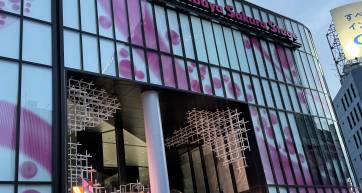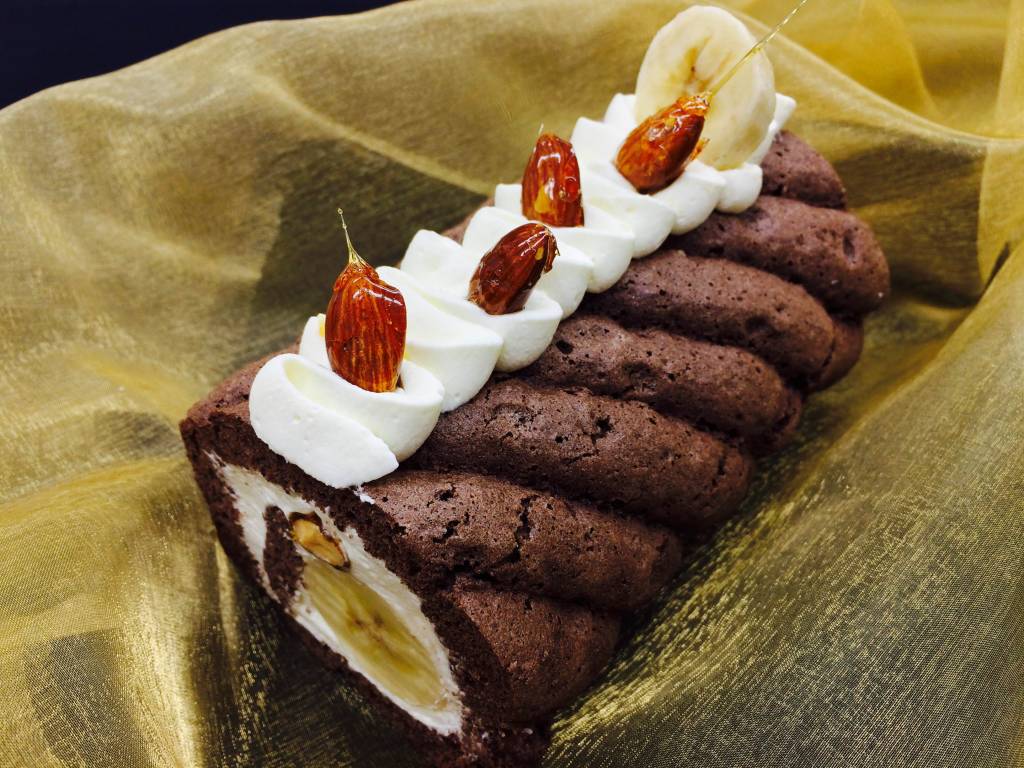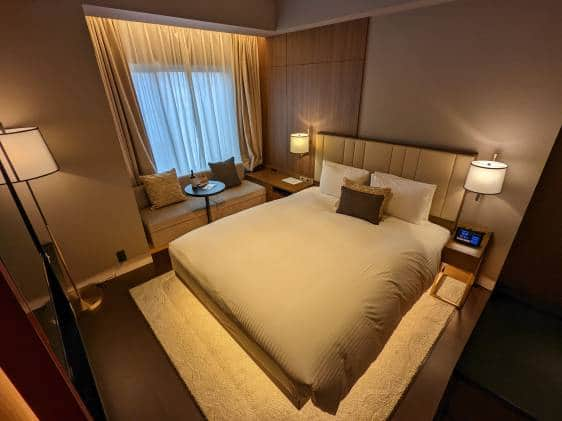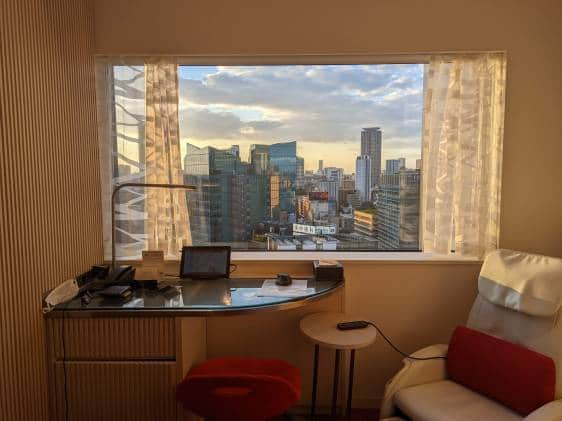Shibuya is one of the most popular areas of Tokyo — a go-to spot for entertainment, shopping, fashion, and restaurants (both local and international). It’s also home to the iconic Scramble Crossing (you’ll definitely want to take a photo — here’s how to do it). To find out what makes Shibuya tick, read on. And check out our things to do in Shibuya article for more highlights.
Pro tip: Make new friends and experience the local nightlife on a bar-hopping tour of Shibuya.
What’s new in Shibuya?
Redevelopment plans around Shibuya Station mean the area has changed — and will change — a lot over the next few years. All construction projects should be completed by 2027 (at the earliest). New skyscrapers and shopping malls such as Shibuya Stream, Shibuya Scramble Square, and Miyashita Park have already made their debut.
Where is Shibuya?
Shibuya (along with Shinjuku) is one of the major hubs on the west side of central Tokyo. The municipal city of Shibuya (Shibuya-ku) is actually very large and includes all of these neighborhoods (to name a few):
However, it’s the area around Shibuya Station that is generally thought of as “Shibuya” — so that’s what we’ll cover in this guide. (All those other neighborhoods are super interesting though, so check them out!)
What is Shibuya like?
Because of its never-ending shops, places to eat, and things to do, Shibuya can get pretty crowded. This is especially true around the famous intersection, where the towering digital billboards may remind you of Times Square in New York City.
The area is especially popular among teenagers and you’ll see many heading into karaoke establishments or coming out of Shibuya 109 laden with bags. Or just chilling on the street being teens.
What are the differences between Shinjuku and Shibuya?
Both Shinjuku and Shibuya are transport hubs that double as entertainment districts — though you could say that Shinjuku is the slightly rougher older brother. Shibuya’s new developments have given the neighborhood a gloss of squeaky-clean newness; Shinjuku, meanwhile, still feels a bit gritty.
Is Shibuya safe?
The short answer: like everywhere else in Japan, yes.
However, Shibuya does have a tendency to become a bit rowdy after the last train has left for the night, especially outside clubs and around the Hachikō dog statue. Check out this Instagram profile if you don’t believe me. Solo female travelers might receive a few uncomfortable heckles; we have tips here to help. You may also encounter touts trying to hustle you into their clubs and bars, but on a lesser scale than Shinjuku.
What is Shibuya known for?
If you had to pick one image to encapsulate Tokyo, it would probably be Shibuya Crossing — it’s that iconic! Recently, the annual (but now discouraged) Shibuya Halloween bonanza has become famous globally through Youtubers and live streaming.
Movies (like TFATF: Tokyo Drift) and video games (like Persona 5) have also taken the bright lights of Shibuya as inspiration.
Neighborhoods within Shibuya
Even within the area around Shibuya Station, there are several micro-hoods worth knowing about, such as:
- Dōgenzaka, also known as Love Hotel Hill, has lots of love hotels (obviously) but also lots of nightclubs and live music venues; to reach Dōgenzaka, head up the road to the left of Shibuya 109.
- Udagawachō covers the area around Center Gai; if you head deep out this way, into the network of side streets, you’ll find small cafes, bars, and record stores.
- Oku-Shibu — which means “deep Shibuya” — is the nickname for the area beyond Udagawachō, centered around the Kamiyamachō shopping street, which has fashionable boutiques and bistros.
What to see and do in Shibuya
Shibuya Crossing, of course! But there is actually a lot more to do here — check out our list of the top things to do in Shibuya. The neighborhood has a vibrant street scene — centered around, uh, Center Gai (a busy, pedestrian strip) — and just wandering around is an experience all on its own.

Besides the aforementioned famous intersection, you can expect brilliant views from the Shibuya Sky observation deck. It is a little pricey, but worth it (we think) for the 230-meter-high view of Tokyo (with a Mount Fuji bonus); purchase tickets in advance online for the best price.
Shibuya is also a creative hub with some good exhibition venues, like Diesel Art Gallery. For more ideas on how to have a Cheapo good time in Shibuya, try our one-day itinerary, which also includes Harajuku and the shrine, Meiji-jingū.
Shopping in Shibuya
As for things to do that require spending in Shibuya, there’s shopping, shopping, and more shopping. Seriously, the area truly lives up to its reputation as a mecca for youth fashion and culture — a shopaholic’s paradise.
The fashion building Shibuya 109 is a testament to this fact, as are the countless other department stores and shopping complexes taking over the area. The choices can be overwhelming!
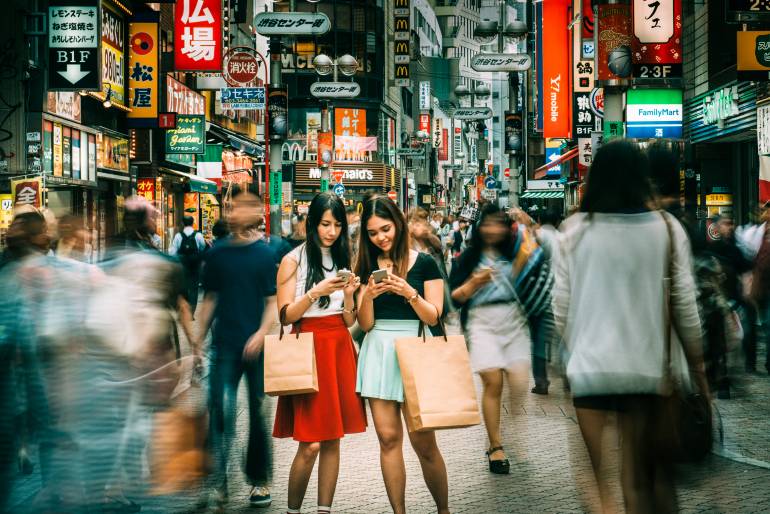
Fresh-out-the-box malls, like Shibuya Scramble Square, Shibuya Hikarie, and Miyashita Park, are particularly notable for their architecture and design. But bargain-hunters like us tend to stick with the old faithful: Mega Don Quijote.
Tokyu Hands and Loft — which sell all kinds of random stuff (you need to see for yourself to understand) — are great for browsing. Shibuya is also famous for record stores.
Where and what to eat in Shibuya
As a youth culture hub, Shibuya excels at hip, trendy — and most importantly — cheap dining options. The neighborhood is especially good for budget sushi. And of course if you say hipster, we say café. Shibuya’s got you covered with some of the best and trendiest coffee joints.

All of Shibuya’s malls have restaurants on their upper floors and food halls with takeaway counters in the basement — if you’re looking for an easy meal. Food Show, part of Tokyu department store but underneath Shibuya Station, is Shibuya’s best depachika (department store basement food hall).
If you’ve gotten an early start (or are staying nearby), Shibuya has some good breakfast spots, too.
Nightlife and entertainment in Shibuya
Shibuya is one of Tokyo’s top nightlife destinations (and for many, it is the nightlife destination). For the students and 20-somethings that hang out here, there are lots of cheap bars and nightclubs (some cheaper than others). Nonbei Yokocho, meanwhile, is a retro eating and drinking alley that’s fun to visit (and draws all kinds).
Shibuya is also one of the top Tokyo neighborhoods for live music — there are lots of venues here, big and small. Karaoke is available on almost every street, too.
Is Shibuya a good place to stay?
Well you could go super Cheapo and try spending the night in a karaoke booth… but luckily Shibuya has a lot more options. Options for all budgets, too: capsule hotels, slightly fancy capsule hotels, flashpacker hostels, bland business hotels, and more upscale hotels. Shibuya is also famous for love hotels — if you’re keen to try that experience. Check out our accommodation guide for more tips and suggestions.
Being in the middle of things, Shibuya is a natural place to base yourself in Tokyo — especially if you want to take advantage of the nightlife. The crowds can be exhausting though after awhile.
How to get to and from Shibuya
Shibuya Station has great train access, hence the amount of people coming and going. The station itself is large — not quite Shinjuku-large — but still plenty confusing. The exit you are probably looking for (the one that will take you to Shibuya Scramble) is the Hachikō exit. The plaza here (with the famous Hachikō statue) is Shibuya’s de facto meet up spot.
There’s also the Shibuya Expressway Bus Terminal for cheap journeys further afield.
Train lines to/from Shibuya
Getting to Shibuya from Narita
Luckily, there are many transport options from Narita Airport, and it takes between 70 and two hours at varying price points. Review our handy guide for further details.
Getting to Shibuya from Haneda
It doesn’t take long to get between Haneda and central Tokyo destinations. To Shibuya, it’s under 30 minutes in a taxi (unless there is traffic) and around 40 minutes by train.
By train, the cheapest way to go is via the Keikyū Main line to Shinagawa, where you’ll transfer to the JR Yamanote line from Shibuya (total cost: ¥470).
Getting to Shibuya from Tokyo Station
The Yamanote line runs between both stations, takes 26 minutes, and costs ¥200. For the same price, and in 6 minutes less, you can take the Marunouchi subway line from Tokyo Station to Akasaka-Mitsuke and make an across-the-platform change to the Ginza line for Shibuya.
What’s near Shibuya?
If you follow Meiji-dōri or Cat Street north from Shibuya, you’ll end up in the funky town of Harajuku, which has similar vibes but is more on the quirky side. The upmarket areas of Omotesandō and Aoyama are also within walking distance (walk up Aoyama-dōri instead). Meanwhile, if you’re craving some greenery, head towards nearby Yoyogi Park.
Three stations to the west (on the Keiō Inokashira line) is Shimokitazawa, which has a plethora of second-hand shops.






